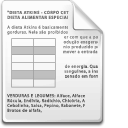Measuring the silent science in conservation biology
Papworth, S. (2018). Measuring the silent science in conservation biology. 5th European Congress of Conservation Biology. doi: 10.17011/conference/eccb2018/108061
Tekijät
Päivämäärä
2018Tekijänoikeudet
© the Authors, 2018
There is increasing interest in measuring the scientific and societal impacts of research. This increasing interest can by demonstrated by the increased weighting of "impact case studies" in the latest UK Research Excellence Framework, which ranks UK universities based on their research. Conservation research is often considered intrinsically applied, but I argue that understanding how conservation research impacts conservation practice is essential to a discussion on the scientific and societal impacts of conservation biology research. Although there are numerous methods to quantify research impact of published peer-reviewed papers (e.g. using Altmetric.com to measure the online impact of research1), these metrics may fail to capture direct impacts where conservation research results in improved conservation practice or success. For example, a newspaper article on peer-reviewed conservation research might be considered 'research impact' does not necessarily lead to quantifiable changes in conservation practice. This "silent science", which does not lead to direct impacts in conservation practice, is mirrored by the silent science which does impact conservation science but is not be captured by these metrics. Examples of this is conservation practice informed by research published in grey literature, or the unpublished work by research teams at conservation NGOs. I do not focus on the relative accuracy or value of these different information sources, instead on highlighting how this silent science is used, but not captured in metrics of research impact.
I present qualitative and quantitative research on the information sources used to support decision-making in biodiversity conservation to identify potential sources of "silent science" in conservation practice. The qualitative research is based on the semi-structured interviews with conservation professionals, and revealed a variety of ways in which conservation research can impact decision-making in conservation practice. An example of "silent science" identified using this method is consulting academics for their expertise. This leads to email exchanges and discussions based on conservation research, and decisions which impact conservation practice, but which are not directly informed by specific peer-reviewed publications. The quantitative research builds on these interviews and uses an online questionnaire to identify how often different information sources are used, and their perceived importance and reliability by conservation professionals. Although the quantitative research can identify the types of information used, and the relative importance of these sources for decision-making, I argue that the impact of silent science on conservation practice may be best measured using qualitative evaluations by research users.
1. Papworth et al. (2015) Quantifying the role of online news in linking conservation research to Facebook and Twitter. Conservation Biology 29: 825-833 ...
...
 ...
...
Julkaisija
Open Science Centre, University of JyväskyläKonferenssi
ECCB2018: 5th European Congress of Conservation Biology. 12th - 15th of June 2018, Jyväskylä, Finland
Alkuperäislähde
https://peerageofscience.org/conference/eccb2018/108061/Metadata
Näytä kaikki kuvailutiedotKokoelmat
- ECCB 2018 [712]
Lisenssi
Samankaltainen aineisto
Näytetään aineistoja, joilla on samankaltainen nimeke tai asiasanat.
-
The Society for Conservation Biology's Commitment to Facilitate the Creation, Dissemination, and Application of Conservation Science
Luke, Debborah (Open Science Centre, University of Jyväskylä, 2018)The Society for Conservation Biology (SCB) currently published two globally recognized peer-reviewed journals, Conservation Biology and Conservation Letters. Publications included in Conservation Biology address issues ... -
Test–retest reliability of cortico-spinal measurements in the rectus femoris at different contraction levels
Gomez-Guerrero, Gonzalo; Avela, Janne; Enroth, Miro; Häkkinen, Ella; Ansdell, Paul; Howatson, Glyn; Walker, Simon (Frontiers Media SA, 2023)Single-pulse Transcranial Magnetic Stimulation (TMS) and, very recently, lumbar stimulation (LS) have been used to measure cortico-spinal excitability from various interventions using maximal or submaximal contractions in ... -
Why we will accept your paper in Biological Conservation?
Devictor, Vincent (Open Science Centre, University of Jyväskylä, 2018)As the Editor in Chief of Biological Conservation, one of the leading journals of the field, I will outline the major directions of the journal and provide future authors with a tool box to help them with their submission. ... -
Threatened birds, dynamic habitats and disturbance processes – conservation biology in one of the worlds most understudied savanna ecosystems
Kingsbury, Jo; Davies, G Matt; Tonra, Chris; Macleod, Ross (Open Science Centre, University of Jyväskylä, 2018)The Beni savannas of Northern Bolivia are one of the world’s most remote, understudied and threatened grassland ecosystems. Here, vegetation dynamics are driven by complex interacting environmental and agricultural disturbance ... -
Linking conservation biology to community assembly processes with hierarchical modelling of species communities
Ovaskainen, Otso (Open Science Centre, University of Jyväskylä, 2018)Applications in conservation biology require a profound understanding of community ecology, in particular of the processes that determine the assembly and dynamics of species assemblages at different spatiotemporal scales. ...
Ellei toisin mainittu, julkisesti saatavilla olevia JYX-metatietoja (poislukien tiivistelmät) saa vapaasti uudelleenkäyttää CC0-lisenssillä.

